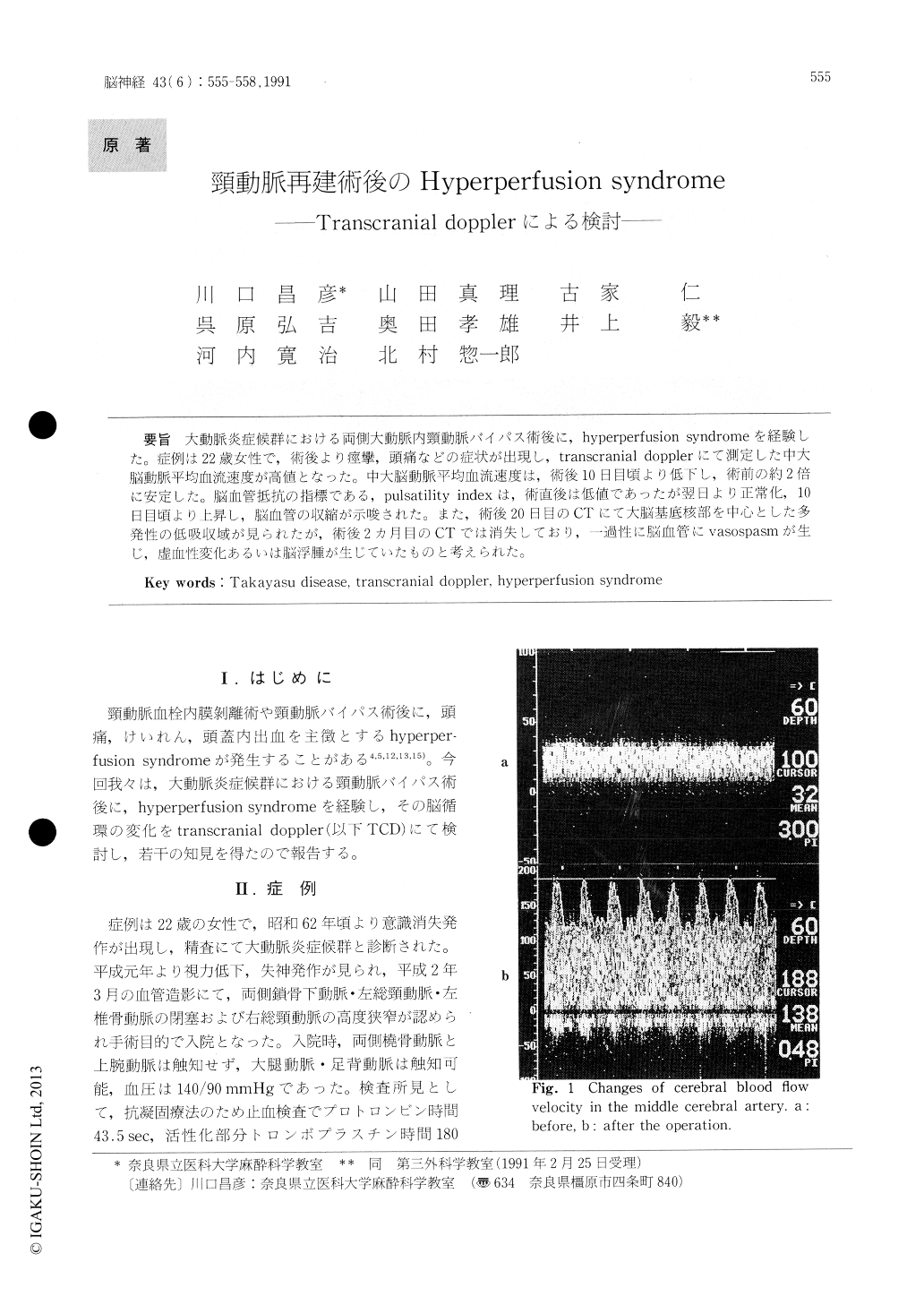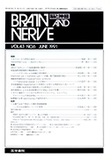Japanese
English
- 有料閲覧
- Abstract 文献概要
- 1ページ目 Look Inside
大動脈炎症候群における両側大動脈内頸動脈バイパス術後に,hyperperfusion syndromeを経験した。症例は22歳女性で,術後より痙攣,頭痛などの症状が出現し,transcranial dopplerにて測定した中大脳動脈平均血流速度が高値となった。中大脳動脈平均血流速度は,術後10日目頃より低下し,術前の約2倍に安定した。脳血管抵抗の指標である,pulsatility indexは,術直後は低値であったが翌日より正常化,10日目頃より上昇し,脳血管の収縮が示唆された。また,術後20日目のCTにて大脳基底核部を中心とした多発性の低吸収域が見られたが,術後2ヵ月目のCTでは消失しており,上書過性に脳血管にvasospasmが生じ,虚血性変化あるいは脳浮腫が生じていたものと考えられた。
A 22-year old female with Takayasu disease, who underwent bilateral aorto - carotid bypass surgery developed hyperperfusion syndrome postoperati-vely.
Following the operation, convulsion and headache developed and mean velocity in the middle cerebral artery, measured by transcranial doppler, elevated. Mean velocity gradually decreased on the 10th postoperative day and became a plateau at 200% of preoperative value. Pulsatility index as a index of cerebral vascular resistance was low just after the operation, became normal the following day and gradually increased 10 days after the operation. These changes seem to be recovery of cerebral autoregulation.
On the 20th postoperative day, computed tomo-graphy scan was examined and multiple low density areas were found in the basal ganglia regions, but these changes disappered 2 months after the opera-tion. These reversible changes of CT scan might show ischemic changes or cerebral edema induced by cerebral vasospasm.

Copyright © 1991, Igaku-Shoin Ltd. All rights reserved.


